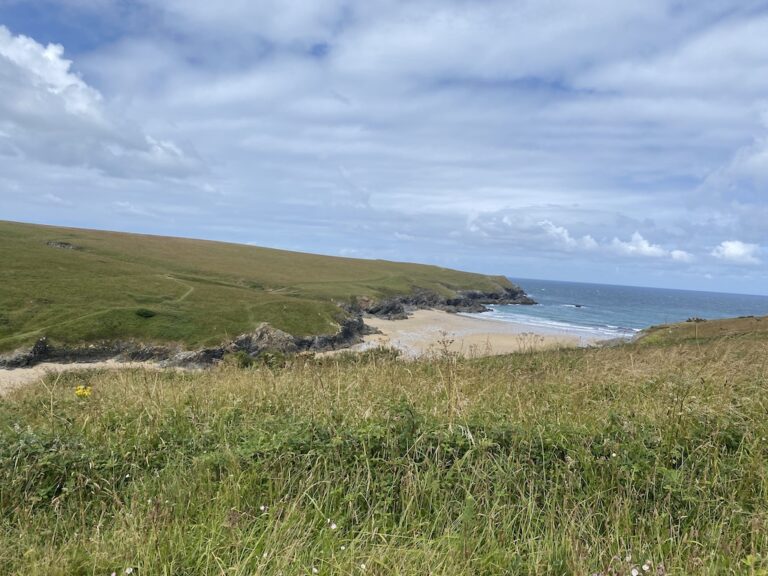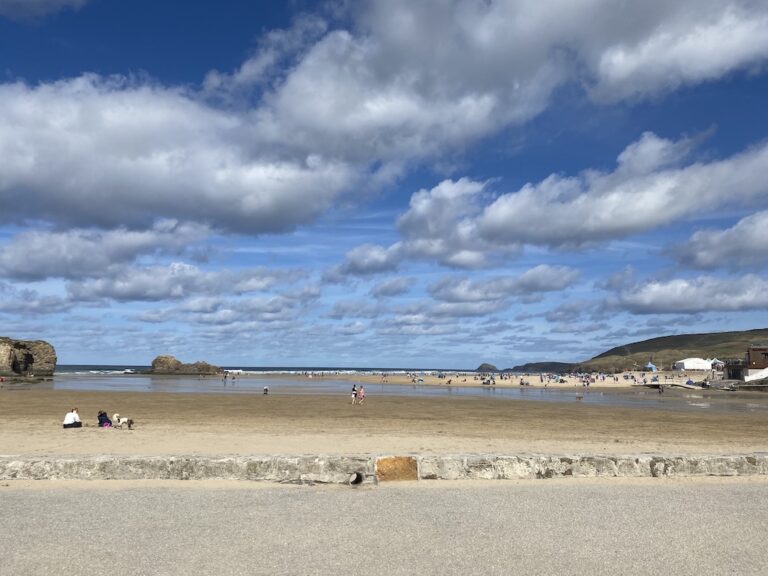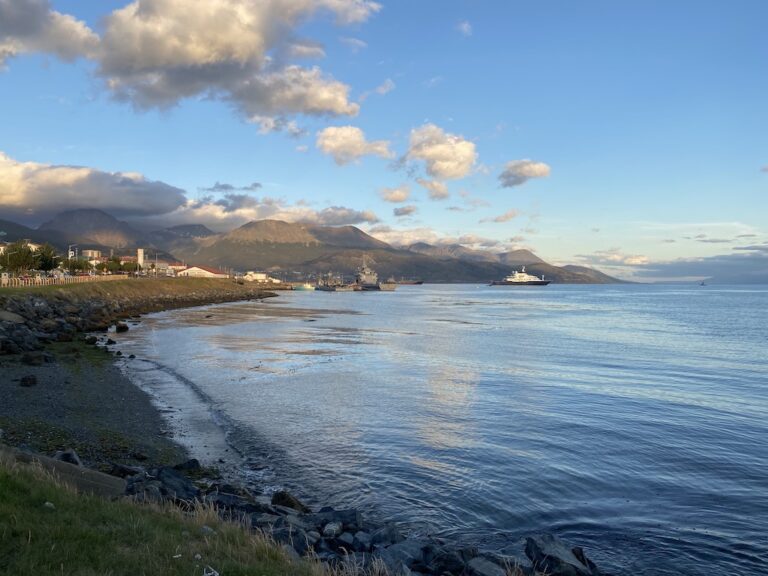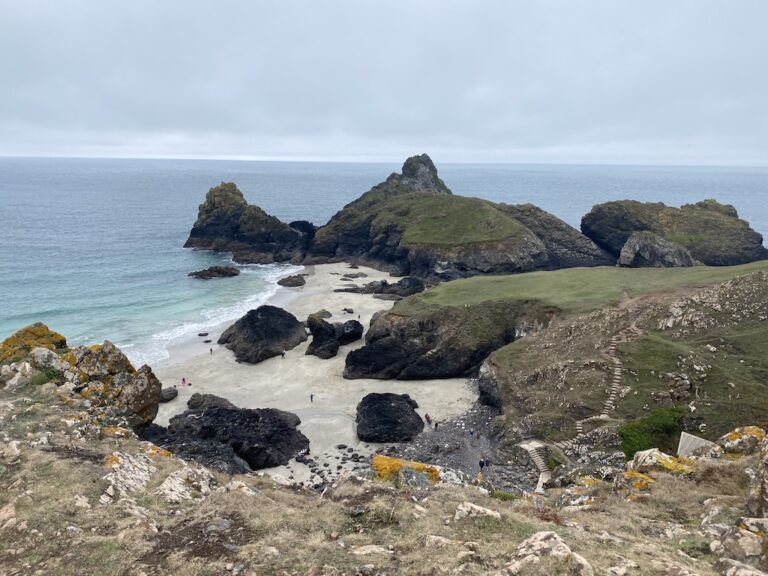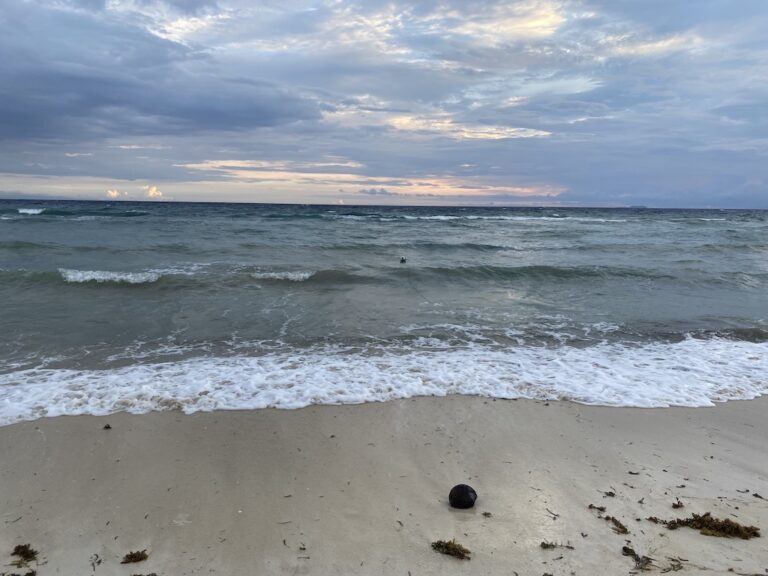The beaches of Tayrona National Park: an ultimate guide
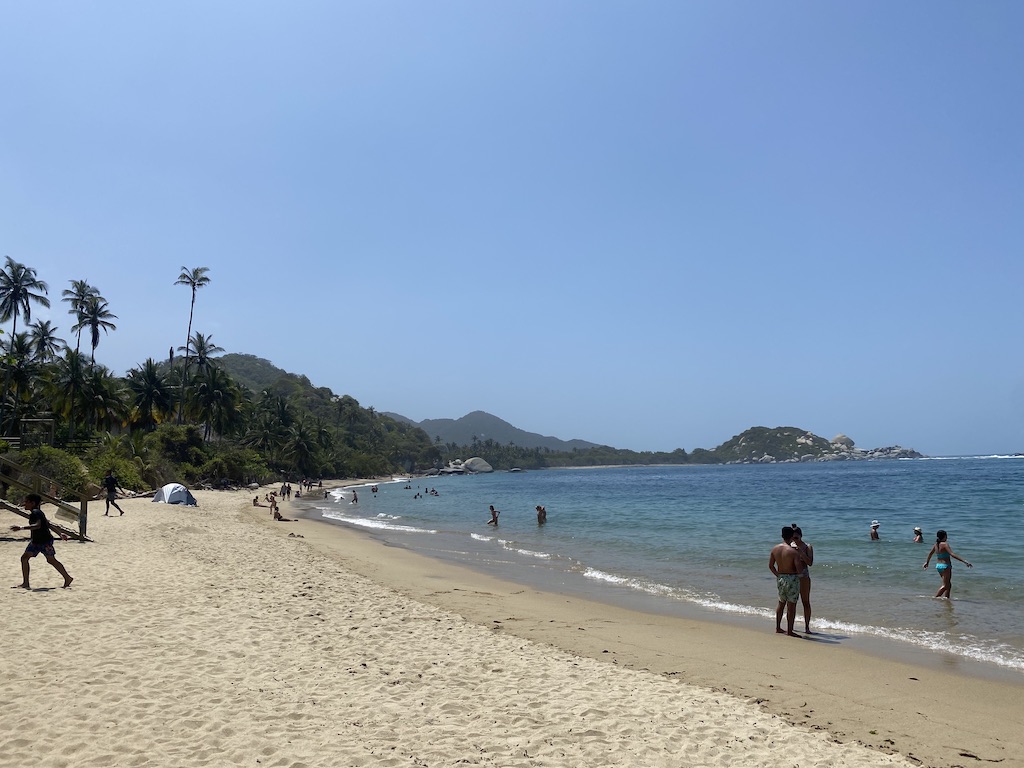
There’s something for everyone in Tayrona National Park. It’s a hiker and beach lover’s paradise.
If there are two things that Tayrona is known for, it’s its gorgeous beaches and wildlife-rich jungle. However, during my visit, one thing that confused me was how many people were heading straight to Cabo San Juan, the most well known beach in the east of the park – completely bypassing the other beaches en route.
I couldn’t understand this. Cabo San Juan is gorgeous, but not gorgeous enough to skip every other beach in favour of just this one.
To combat this, I’ve written this guide, in which I go through each beach in the east of the park and outline their attributes and merits. You may not want to visit all of them, but at least you’ll have an idea of what all of them are like!
What is Tayrona National Park?
Parque Nacional Natural Tayrona – or Tayrona National Park in English – is a protected area on Colombia’s Caribbean coast. Sandwiched between the sea and the Sierra Nevada mountain range, yet only 45 minutes’ drive from Santa Marta (the nearest city), the park is easily accessible to tourists.
At 150 km2, the majority of the park comprises jungle, with both wet and dry forest present. Along its boundary, there are a range of pretty beaches. Some are long and rough so aren’t suitable for swimming, whilst others form coves, making for gentler, more tranquil waters. It’s the latter beaches that attract the most attention.
Some of the beaches, in the west of the park, are so remote that they cannot publicly be accessed by land – only by boat. I haven’t visited these beaches so I won’t discuss them further in this article! You can find plenty of tours to Playa Cristal and its nearby beaches departing from Santa Marta.
There are also beaches in the east of the park, which tourists can access via trails which can be walked or hiked (depending on the path chosen). These include Cabo San Juan, La Piscina and Playa Brava. These are the beaches I’ll be focussing on within this article!
By the way, I’ve written a more detailed guide on how to visit Tayrona National Park, which has more information on logistics. If you want more information on how to plan your visit, this is where to go!
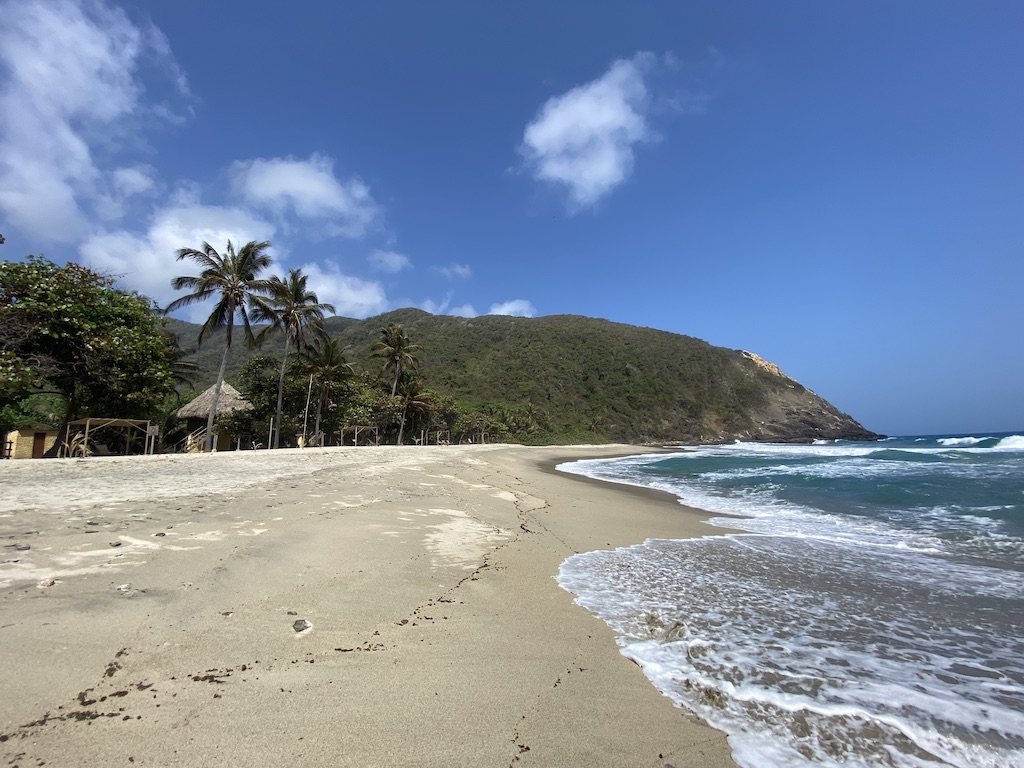
A trip through Tayrona’s many beaches
To give you an idea of what’s available, I’ve detailed the beaches present below. These are listed in the order that you’d visit them from the El Zaino entrance, to help you plan for your own visit should you decide to come.
Cañaveral
Your first taste of the beaches in Tayrona National Park is Cañaveral. It’s a long sandy beach with strong waves.
I thought Cañaveral was beautiful; it’s well worth walking on it if you have the time. However, as the first beach you’ll come across if walking from El Zaino, this beach is often overlooked and passed through quickly in favour of the other beaches. I’ll admit this is what we did too, just stopping for a quick photo and biscuit break. But if you’re looking for a quieter beach with a shorter walk or are planning to visit every beach en route, this is a good start.
Can you swim? No
Are there facilities? None

Arrecifes
The next beach along is Arrecifes. Quite different to the other beaches, this felt a lot wilder in nature, with the biggest waves we saw in Tayrona and a strong wind.
I liked this beach but thought it perhaps didn’t have the vibe most people are going for when they visit the park. The water is too choppy to go for a swim, and it does not have a strong Caribbean feel compared to the other beaches. However, it connects to the next beach (Arenilla) and can be walked down as an alternative to the main forest path in this area, so could still be visited easily.
One thing to note is that, to get to the beach, you’ll have to pass through the Arrecifes campsite. It feels a bit weird the first time – we didn’t initially recognise this as a route as there are no signs – but it is an established path through to the beach. If you miss it, however, you can walk around the bay from Arenilla.
Can you swim? No
Are there facilities? A range of campsites, restaurants and bars are within a 5 to 10 minute walk, although there are none on Arrecifes itself.
Arenilla
The first of a series of beaches that you can swim at, Arenilla is a well-serviced open bay. Here, you’ll find nice sand and reasonable water, whilst areas of the beach still remain quiet.
Arenilla is the first, and only, beach that you have to cross to reach the later and more popular beaches. As such, you’ll find a lot of bars and restaurants on the sand or just off it. We ate at the arepería to the left of the walkthrough to the later beaches and found them to be of decent quality. Other places are available after a two minute walk to the right of the walkthrough.
My favourite area of Arenilla was the west side. Behind a rock formation there is an area of secluded sand, which felt private without sacrificing amenity.
Undoubtedly you’ll pass through Arenilla, so this would make a good stop for a swim and chill, and perhaps a bite to eat, before you continue to the more popular beaches.
Can you swim? Yes – there’s a lifeguard. However, the water is not as tranquil as the later beaches.
Are there facilities? Several bars and restaurants are present at the beach.
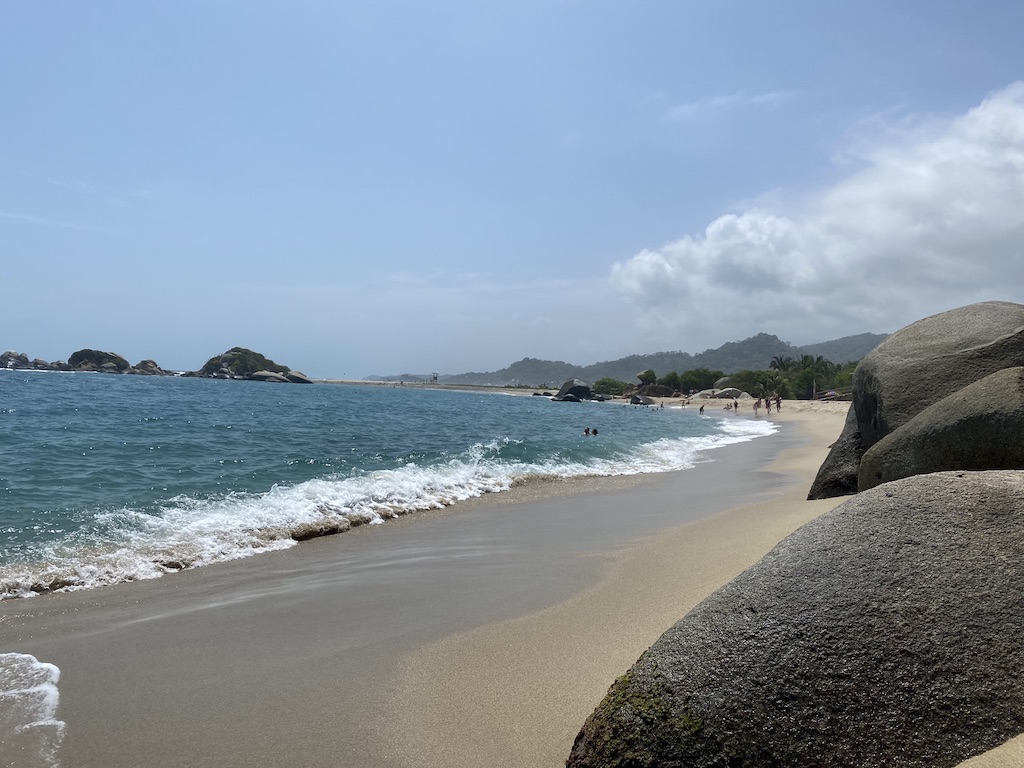
La Piscina
Not far after Arenilla (around a 10 minute walk), you’ll find another cove known as La Piscina (“pool” in English).
Its name comes from the presence of a natural reef formation off the coast, which provides shelter to La Piscina and partial cover to Cabo San Juan and Arenilla as well. At this reef break you’ll see plenty of bigger waves crashing, meaning the water flowing into these bays is much calmer. When I visited, the water at La Piscina was by far the gentlest of any of the beaches, and it was the best place to swim.
La Piscina was personally my favourite beach. Although the beach itself is pretty thin, there are lots of trees, so finding shade was not a problem. As the nearest accessible beach to Cabo San Juan, it was comparatively quiet, although perhaps still the second busiest beach on this side of the park!
Can you swim? Yes – and a lifeguard is present.
Are there facilities? Several food stands on the beach, e.g. a sandwich shop and fruit stand. Some ecohabs are also present within 1 minute’s walk of the beach, which would be a more glamorous way to experience the park.
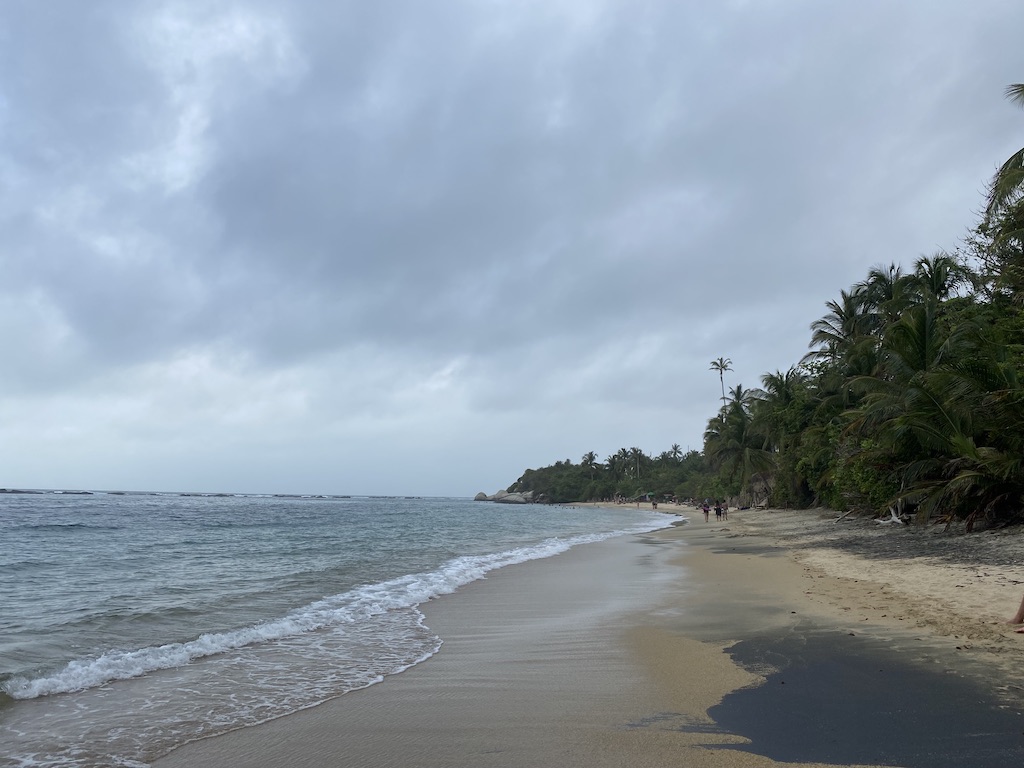
Cabo San Juan de Guía
Twenty minutes’ walk after La Piscina, you’ll find Cabo San Juan. Chances are, if you’ve ever googled Tayrona, it’s a picture of this that has come up, and for good reason – this has to be one of the prettiest beaches in this area of the park.
To get a sense of the geography of Cabo San Juan, it’s a pair of two coves connected by a sand bank. You can swim in both beaches – I thought the water was a bit clearer here than in Arenilla, and on the western cove there are some larger rock formations underwater that you can swim over and watch fishes at.
The water was choppier than I expected, so perhaps it’s worth swimming at La Piscina instead if you desire calm waters.
For me, and for many other backpackers I met whilst in Colombia, the problem was that it’s so busy. As Tayrona’s most popular hikeable beach, this is the ultimate destination for many visitors; many will even skip the other beaches in favour of spending more time at this one.
I can’t pretend to understand this – Cabo is beautiful but not that beautiful!
Therefore, I’d recommend visiting Cabo in the morning; before 12 pm is best. There’s a campsite at Cabo San Juan which would make this easiest – if you stay here you’ll be able to enjoy the beach at its quietest in the evening and early morning. You could also head here first thing from one of the the campsites, such as Arrecifes. Be warned though – the campsite at Cabo is pretty big, so do not expect a quiet stay!
Just to note, Cabo is also accessible by boat from Taganga if you’d prefer not to hike.
Can you swim? Yes – there is a lifeguard.
Are there facilities? There is a restaurant, several food stalls and a campsite.
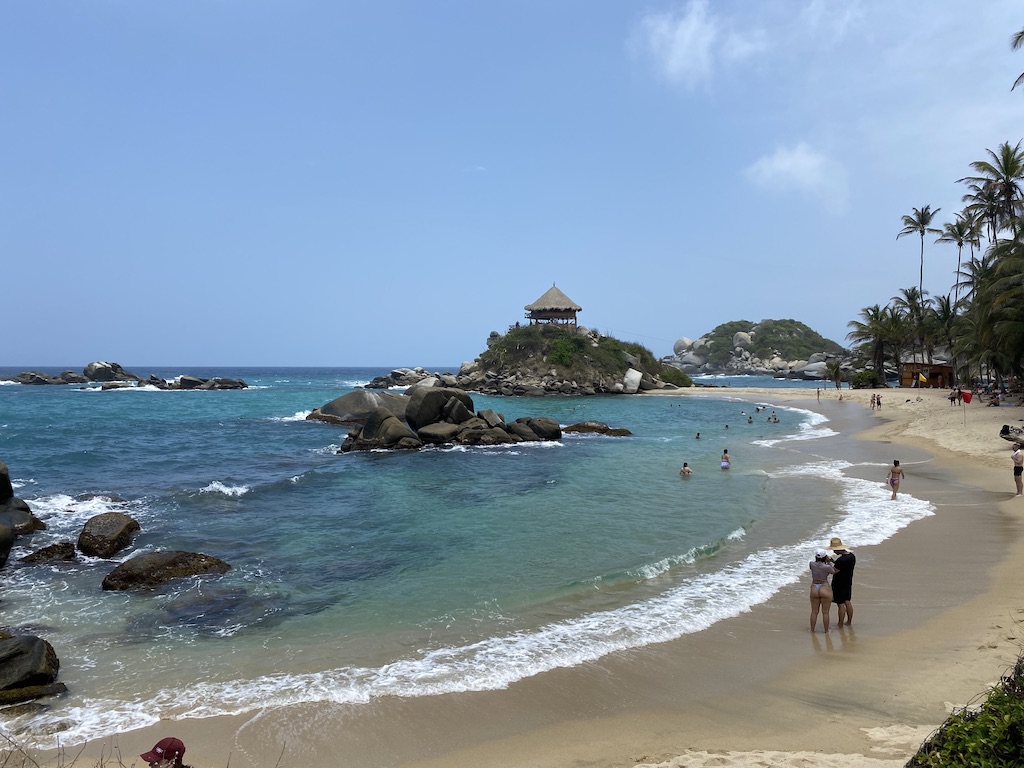
Boca del Saco
On the other side of Cabo San Juan, you’ll find two final beaches – Boca del Saco and the nudist beach. The first of these, Boca del Saco, is only five minutes’ walk west of Cabo and yet was so quiet, with just a couple of people on it when I visited. It’s a long, fairly thick beach with pretty waters.
The main problem is that swimming is prohibited here, although, as the water isn’t any rougher than at Cabo, we did wonder if this was just because there is no lifeguard.
Can you swim? No
Are there facilities? None – but Cabo San Juan and its facilities are only five minutes’ walk away.
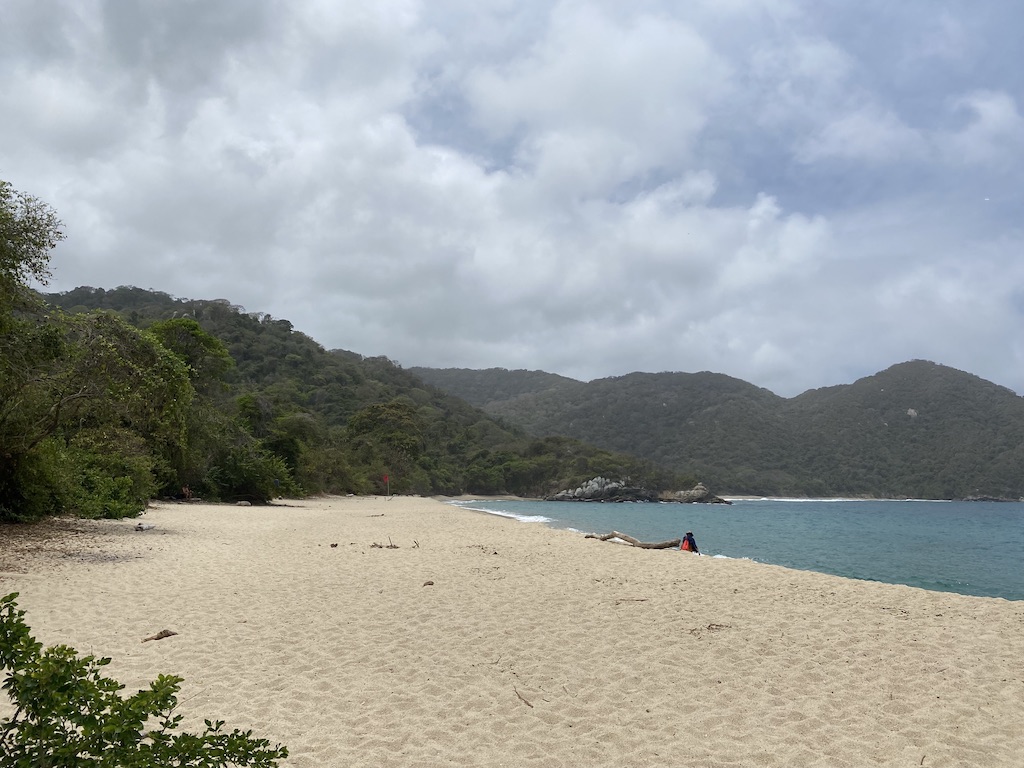
Playa Nautista
And, finally, you’ll find the aptly named Playa Nautista, Tayrona’s very own nudist beach.
I didn’t spend much time here but thought it looked like a spacious, pretty beach which might appeal for those looking for a relaxing experience as well as those who lean into the naturist lifestyle. There weren’t actually many nudists on the beach, so don’t let this aspect of the beach put you off if that’s not your style.
You can also pass through this beach on the way to Playa Brava from Cabo, making it a possible stopover.
Can you swim? No
Are there facilities? No
Playa Brava
One final beach which can be hiked to is Playa Brava. I seek to demarcate this from the other beaches because it is accessed down a separate path, which takes 3 hours of walking from the Calabazo entrance or from Cabo San Juan, so to visit this comfortably you’ll almost certainly need a night at Playa Brava.
However, given its isolation from the rest of the park and therefore quietness, Playa Brava reminds me of what the rest of the park must have been like before they became popular with tourists – unspoilt and slightly wild. To me, this felt like the most tranquil spot in the park.
It feels different to the other beaches as well; it’s still a cove, but the beach is much longer and wider than the others. There was proper sand (at Cabo and La Piscina, as the beach is so skinny, in areas the sand is almost dirt as it blends with the soil near the beach)! I got a distinct Cornish vibe.
Can you swim? No
Are there facilities? There is a campsite with lodges and a restaurant.
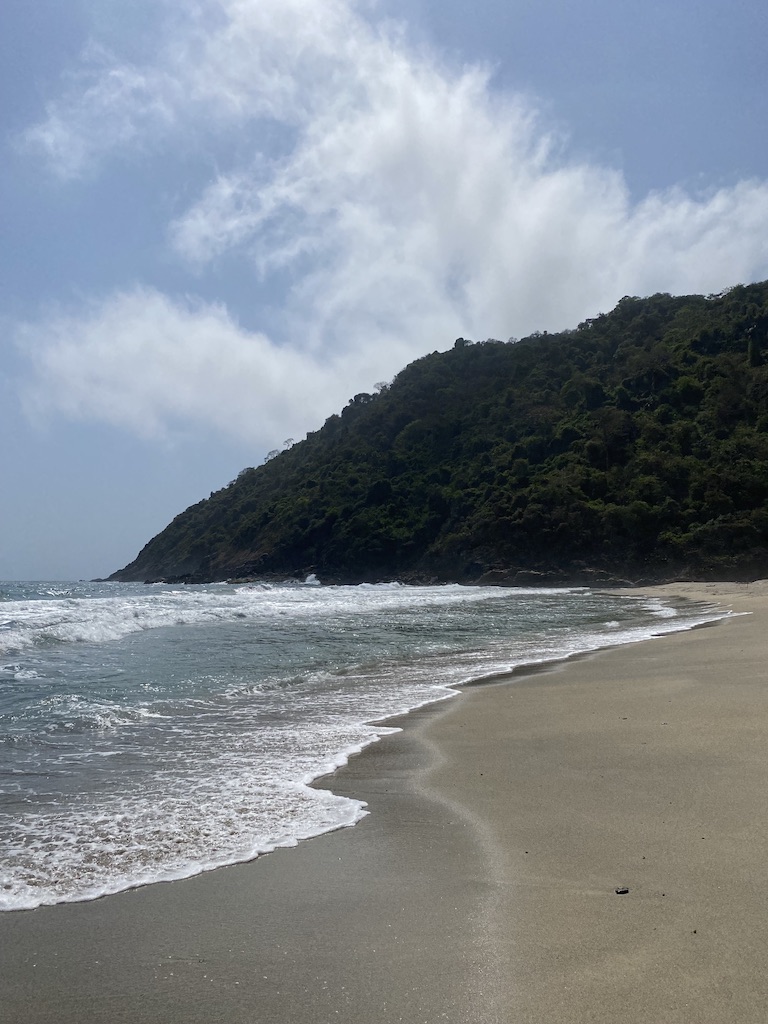
Which of Tayrona’s beaches is best?
There’s quite a lot of beaches to pick from, and it’d be difficult to say which beach reigns supreme above all others. It really depends on what you like, whether you’d like to swim, and how many people you can tolerate.
Many people believe Cabo San Juan to be the best beach, and, on photo, it probably is – it’s beautiful and has the most Caribbean charm of all the beaches. However, it’s so busy that it can feel irritating to visit.
I preferred La Piscina; it’s quieter and the waters are calm, so you can swim. I also really liked Playa Brava – it’s very quiet and has good sand. It’s just a faff to get to!
Ultimately if and when you visit, it’s worth checking out each one and making up your own mind. You’ll have to pass most of them anyway, so there’s no harm in it.
Conclusion
Tayrona National Park, on Colombia’s Caribbean coast, has plenty of gorgeous beaches. I’d fully recommend a visit, even if only for a day, to get hiking, spot some wildlife, and swim and chill at some of the sandy coves.
Which beach are you most looking forward to visiting? If you’ve already visited before, which was your favourite? Let me know in the comments!
Where to next? Check out Minca, Palomino and the Ciudad Perdida trek!
Further information
- Head to the official website for official information on pricing, opening times and important information.
- Free to Roam’s walk through Tayrona National Park from the Calabazo entrance is worth a read if you’re considering entering from here. They also include further information on the beaches en route.
- Kiona x Coffee gives a good round up of the two night, three day walk including Playa Brava.
- Check out People Are Culture for more information about the Kogui people inhabiting the park – a super interesting article!
- Along Dusty Road’s guide to Tayrona National Park is super detailed and their FAQ format is so handy for finding out exactly what you want to know.
- Destinationless Travel’s article on Tayrona National Park is super informative as well, particularly for getting more information on accommodation options.

